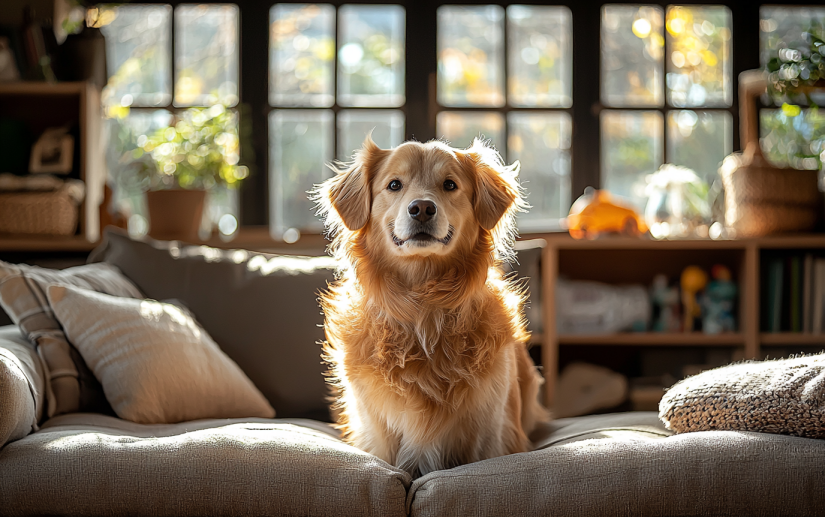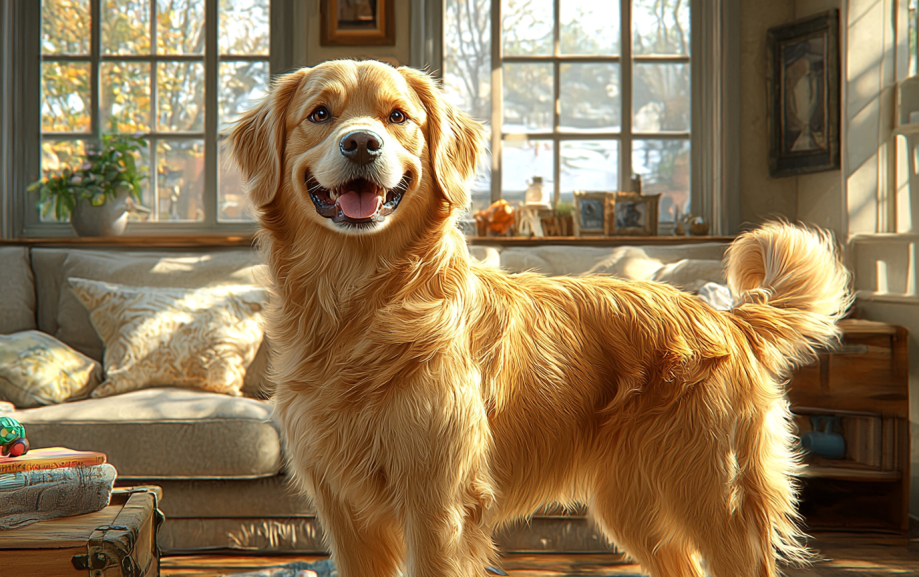Why Understanding Dog Body Language is Important
The Importance of Non-Verbal Communication
Dogs can’t speak to us with words, but their bodies are constantly communicating. From a wagging tail to a tense posture, dogs give us countless clues about how they’re feeling. Unfortunately, many dog owners misinterpret these signals or overlook them entirely. Failing to recognize dog’s body language can lead to unwanted behaviors, misunderstandings, and even dangerous situations.
How Dogs Use Body Language to Communicate
Dogs use their entire bodies to express emotions and intentions. Tail movements, ear positions, posture, facial expressions, and even subtle shifts in weight all convey important information. Understanding these signals helps you gauge whether your dog is happy, anxious, fearful, or even aggressive.
Learning to interpret your dog’s non-verbal cues also allows you to respond in ways that make them feel safe, understood, and loved. A well-tuned sense of your dog’s body language can help you avoid triggering stress or aggression and improve overall communication between you and your furry friend.
Common Dog Body Language Signals
Tail Movements and What They Mean
The tail is one of the most expressive parts of a dog’s body, and its movements can reveal a lot about how a dog is feeling:
- Wagging Tail (Happy or Excited): A wagging tail usually means your dog is excited or happy, but pay attention to how fast and high the tail is moving. A slow, low wag indicates contentment, while a fast, stiff wag with a high tail may signal agitation.
- Tucked Tail (Fear or Anxiety): A dog with its tail tucked between its legs is likely scared, anxious, or feeling submissive.
- Raised, Stiff Tail (Alert or Aggressive): A high, stiff tail may indicate a dog is on alert or showing signs of dominance or aggression.
Ear Positions: Alert, Relaxed, or Stressed
A dog’s ears are highly expressive and can change positions depending on the situation:
- Ears Forward (Curious or Alert): When your dog’s ears are perked up and pointing forward, it indicates they’re alert, focused, or interested in something.
- Ears Relaxed (Calm or Content): Ears that are gently resting in their natural position, whether floppy or standing, usually indicate your dog is relaxed.
- Ears Pinned Back (Fear or Submissiveness): Pinned-back ears can be a sign of fear, stress, or submission, especially when paired with other signs of anxiety like a tucked tail or cowering posture.
Understanding Posture: Relaxed vs. Tense
Your dog’s posture speaks volumes about their emotional state:
- Relaxed, Loose Posture: When a dog is standing or sitting with a loose, fluid body, they are calm and happy. Their weight will be evenly distributed, and they may have a soft, wagging tail.
- Stiff, Tense Body: A tense posture with a rigid body and weight shifted forward can indicate that a dog is feeling defensive, threatened, or aggressive. This is often accompanied by raised hackles (the fur along the dog’s back).
Facial Expressions: Eyes, Lips, and Teeth
Dogs have a wide range of facial expressions that reflect their emotions:
- Soft Eyes (Calm and Relaxed): A calm dog will have soft, relaxed eyes. They may blink slowly or maintain neutral eye contact.
- Wide Eyes (Fear or Aggression): When a dog’s eyes are wide open, showing the whites (sometimes called “whale eye”), it’s usually a sign of fear or stress. Direct, hard staring can signal aggression.
- Yawning and Lip Licking (Stress or Uncertainty): Dogs often yawn or lick their lips when they’re stressed or unsure of a situation. These behaviors are known as displacement signals, which help dogs calm themselves.
- Baring Teeth (Aggression or Warning): When a dog shows its teeth, especially with a wrinkled snout, it’s often a warning. This can be a sign of fear, aggression, or dominance, and it’s important to give the dog space.
Signs of a Happy and Relaxed Dog

Relaxed Posture and Tail Wagging
A happy, relaxed dog will typically have a soft, loose body with a wagging tail. Their tail will wag gently, usually mid-height, and their overall posture will be relaxed. They might approach you confidently or lay down with their legs stretched out, showing that they feel safe and content.
Play Bow and Inviting Behavior
One of the most obvious signs of a playful dog is the play bow—when the dog stretches their front legs out, lowers their chest to the ground, and keeps their hind end raised in the air. This posture is an invitation to play and is often accompanied by wagging tails, jumping, or barking in an excited, friendly way.
Calm, Gentle Eyes and Soft Ears
When a dog is happy and relaxed, their eyes will be soft and their ears will rest naturally. They may blink slowly or maintain soft eye contact without staring. Relaxed dogs often exhibit an open mouth with a slight pant, which signals comfort and happiness.
Recognizing Stress and Anxiety in Dogs
Tucked Tail, Cowering, and Shaking
A dog that feels anxious or fearful will often show signs like a tucked tail, crouching, or even shaking. These behaviors are strong indicators of stress, and they may happen during new or uncomfortable situations, like vet visits or loud environments. Understanding these signs can help you remove your dog from situations that cause fear.
Panting, Pacing, and Yawning as Stress Signals
Excessive panting (when not related to heat), pacing, and yawning are classic signs of stress. These behaviors are often seen when dogs are nervous, anxious, or overwhelmed by their surroundings. Yawning in this context is a displacement behavior, meant to calm the dog’s anxiety.
Avoidance Behaviors and Subtle Cues
Sometimes dogs avoid direct confrontation by turning their heads, walking away, or refusing to make eye contact. These avoidance behaviors are subtle cues that your dog may be uncomfortable or nervous. Learning to recognize these early signs can help prevent your dog from becoming more stressed or reactive.
READ ALSO: How to Help an Anxious Dog: Effective Tips and Techniques
Aggression and Warning Signs in Dog Body Language

Stiff Body, Raised Hackles, and Direct Staring
When a dog feels threatened or aggressive, they may stiffen their body, raise their hackles (the fur along their back), and give direct, hard stares. These signs indicate that the dog is on edge, possibly preparing to defend itself or assert dominance.
Growling, Baring Teeth, and Defensive Posture
Growling, baring teeth, and adopting a defensive posture—such as standing tall and stiff with the head lowered—are all strong warning signs. These behaviors should be taken seriously, as they signal that a dog is uncomfortable and could potentially bite if pushed further.
How to Respond Safely to Aggressive Signals
When you notice these signs, it’s crucial to stay calm. Don’t make sudden movements or stare directly into the dog’s eyes. Slowly back away and give the dog space. Avoid punishing the dog, as this can escalate aggression. If your dog frequently exhibits aggressive body language, consider working with a professional dog trainer or behaviorist to address the underlying issues.
How to Respond to Your Dog’s Body Language
Positive Reinforcement and Calming Techniques
Responding appropriately to your dog’s body language can strengthen your bond and make them feel understood. When your dog shows signs of anxiety or stress, it’s important to remain calm and offer reassurance. Gentle petting, soothing words, or even giving them a safe space (like a crate) can help them feel more secure. Using positive reinforcement—such as treats or praise—when your dog is calm reinforces the desired behavior.
Building Trust Through Understanding and Respect
The key to a healthy relationship with your dog is mutual understanding and respect. By recognizing when your dog is anxious, happy, or uncomfortable, you can adjust your behavior accordingly. For instance, if your dog is displaying stress signals, give them space or remove them from the situation. This builds trust and ensures that your dog feels safe and understood.
The Impact of Breed and Physical Traits on Body Language
How Different Breeds Express Body Language
Different dog breeds can express body language in unique ways due to their physical traits. For example, a Greyhound’s relaxed body posture may look very different from a Bulldog’s due to their body shapes and muscle distribution. Similarly, breeds with cropped ears or docked tails (such as Dobermans or Boxers) may have more subtle ear or tail signals.
Variations Due to Tail Length, Ear Shape, and Fur Type
Dogs with long fur, short tails, or floppy ears may not express themselves in ways that are as immediately obvious. For example, a dog with a curly or short tail, like a Pug, won’t show the same tail signals as a dog with a long tail, like a Golden Retriever. It’s important to be mindful of these variations and pay closer attention to other signals, like facial expressions and posture.
The Role of Environment and Socialization in Dog Body Language
How Dogs Communicate in New Environments
A dog’s body language may change dramatically in unfamiliar environments. In new situations, dogs may show increased signs of alertness or stress. Understanding this can help you manage your dog’s exposure to new places, ensuring that they are socialized in a safe and controlled way.
Socialization and Its Effect on Body Language
Well-socialized dogs tend to exhibit calmer, more confident body language in new environments or when meeting new dogs. Socialization during puppyhood is critical, as it helps dogs become more familiar with different people, animals, and environments, leading to more relaxed and confident communication.
Strengthening the Human-Dog Bond Through Body Language

Using Body Language in Training
You can use your own body language to communicate more effectively with your dog during training. Dogs are highly perceptive of our movements, so standing tall, using hand signals, and maintaining a calm demeanor can reinforce your verbal commands.
Enhancing Communication for a Stronger Relationship
By learning to read your dog’s body language, you can tailor your interactions to meet their emotional and physical needs, ultimately creating a stronger bond. A dog that feels understood and respected will trust you more, leading to a deeper, more fulfilling relationship.
Conclusion
Understanding your dog’s body language is one of the most important skills a dog owner can develop. From recognizing signs of happiness and relaxation to identifying stress and aggression, being in tune with your dog’s non-verbal communication allows you to create a safer and more loving environment for them. With practice and observation, you can respond effectively to your dog’s cues, making your relationship more harmonious and rewarding.





